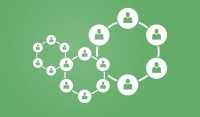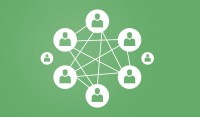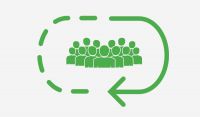Social Dilemma
The idea of the social dilemma captures something very profound about the nature of social groups as it can be found in virtually all situations of interdependence between agents.
The social dilemma captures the core dynamic within groups requiring collective action, where there is a conflict between an individual’s immediate personal or selfish interests and the actions that maximize the interests of the group.1 At the heart of social dilemmas lies a disjunction between the costs to the individual and the cost to the whole, or benefits to the individual and benefits to the whole. This value that is not factored into the cost-benefit equation of the individual is called an externality, and it is externalities that create the disjunction between the parts and whole and result in the dilemma.2
In the past ten to twenty years interest in social dilemmas has grown dramatically within many domains – particularly those resulting from overpopulation, resource depletion, and pollution.3 The study of social dilemmas is one of the most interdisciplinary research fields, with the participation of researchers from anthropology, biology, economics, mathematics, neuroscience, political science, and psychology among others.
As an example of the social dilemma, we can think about the voting process within democratic political systems. In such a system citizens are called upon to make informed decisions about who should manage their country’s government. Many people choose not to vote, but of those who do, in order to make an informed decision, they have to gather and process information about the candidates. Since each person’s vote is unlikely to affect the outcome of an election and everyone knows this there is little incentive to the individual to increase their knowledge about the relevant issue and overcome misinformation and preconceptions. The benefits of collecting and processing the information are diffused to the whole population. But the cost of doing such action is carried by the individual. Informed voting is then what we would call a public good.
As another example, we can think of a situation where during winter people in a village are asked to keep their thermostats low to conserve the limited amount of energy available. This would though require them to suffer from the cold without appreciably conserving the fuel supply by their individual sacrifice; yet if all keep their thermostats high, all may run out of fuel and freeze.4
Externalities
Externalities are at the heart of most social dilemmas, from traffic congestion to pollution and the overconsumption of natural resources
What is happening in this game is that there is a positive externality. Some of the value that is being generated by the individual is being externalized to the whole organization. This external value can not be immediately factored into the cost-benefit analysis of the individual. If the system is simply operated according to this immediate cost benefit analysis of the individuals then there will likely be an undersupply of it.5 Equally, we can have negative externalities, the classical example being air pollution and traffic jams. An important part of the social dilemma is that at any given decision point, individuals receive higher payoffs for making selfish choices than they do for making cooperative choices, regardless of the choices made by those with whom they interact and everyone involved receives lower payoffs if everyone makes selfish choices than if everyone makes cooperative choices.6
What is interesting about the social dilemma is that it is not a feature of the agents but of the structure of the game. It has nothing to do with the personalities and motivation of the individuals. It is a tragedy because you know what the outcome will be, but you can not individually do anything to avoid it, given only the self-interests of the individual. No one has an individual motive to change their behavior even though everyone will be worse off.7 Our traditional tools of non-cooperative game theory that are focused on the immediate costs and benefits to the individual, only really work when the externalities are limited. As soon as the externalities both positive or negative go above a certain level we have to think and operate collectively.
Many private goods are rivalrous, meaning they can be only consumed by one agent, and excludable meaning it is possible to exclude others from their use. This reduces the externalities from the item and thus makes it possible to associate the value of that item with an agent and factor it into their cost-benefit analysis. Goods are public when they are considered both nonrivalrous and nonexcludable, meaning that there will likely be many externalities and thus they can not be effectively managed by the immediate cost benefit analysis of the individual agents.8 In such a case the social dilemma can arise. When people can benefit from the positive externalities, and produce more of the negative externalities without paying, the result is a macro level imbalance that leads to the system being rendered unsustainable.
Solutions
The formation of third party formal governing institutions that have the capacity to impose sanctions and incentives is the most readily identifiable approach to solving the social dilemma, and the one that has become most prevalent within societies as their economies have industrialized and grown in scale
There are essentially two different approaches to solving this imbalance and managing collective action. The organization can try to create some top-down structure that regulates the system to ensure that those who create negative externalities pay for them and those who create positive externalities get paid for them. This works to reintegrate the positive externalities into the cost-benefit analysis of the agents and maintain a macro-level balance. This is our traditional approach taken, the classical example of which being governments, that use force and incentives to regulate the system towards these ends.9
Equally a second approach is to increase the degree of connectivity between the agents and thus the potential for a higher degree of interdependence between them. Given that interdependence means that what happens to one agent also happens to another, as interdependence between agents and between the individual and the whole increases, externalities decrease – because there is nowhere for them to go. In an integrated and interdependent system, there is nowhere for the externalities to go and the agents have to increasingly factor them into their own cost-benefit analysis. Which is one approach to managing the system and potentially solving the problem.
Externalities are always a function of independence. If two things are one, then there is no possibility for externalities, the more independent they are the greater the possibility for externalities. Thus all solutions to externalities and the social dilemma will involve creating positive interdependence between the elements in the system, but different approaches will do this in different ways.10
1. (2017) Press.princeton.edu. Retrieved 13 May 2017, from press.princeton.edu/chapters/s9338.pdf 2. Social Dilemmas. (2017). Google Books. Retrieved 13 May 2017, from https://goo.gl/wQrXXE 3. (2017). Cmu.edu. Retrieved 13 May 2017, from https://www.cmu.edu/dietrich/sds/docs/dawes/social-dilemmas.pdf 4. Social Dilemmas. (2017). Google Books. Retrieved 13 May 2017, from https://goo.gl/4bLJv5 5. (2017). Eml.berkeley.edu. Retrieved 13 May 2017, from http://eml.berkeley.edu/~saez/course131/publicgoods_ch07.pdf 6. (2017). Press.princeton.edu. Retrieved 13 May 2017, from http://press.princeton.edu/chapters/s9338.pdf 7. (2017). Uwaterloo.ca. Retrieved 13 May 2017, from https://goo.gl/YGVqER 8. (2017). U.arizona.edu. Retrieved 13 May 2017, from http://www.u.arizona.edu/~mwalker/11_PublicGoods/Public%20Goods%20Examples.pdf 9. (2017). Else.econ.ucl.ac.uk. Retrieved 13 May 2017, from http://else.econ.ucl.ac.uk/papers/uploaded/334.pdf 10. (2017). Users.dcc.uchile.cl. Retrieved 13 May 2017, from https://users.dcc.uchile.cl/~luguerre/papers/CRIWG-03a.pdf










